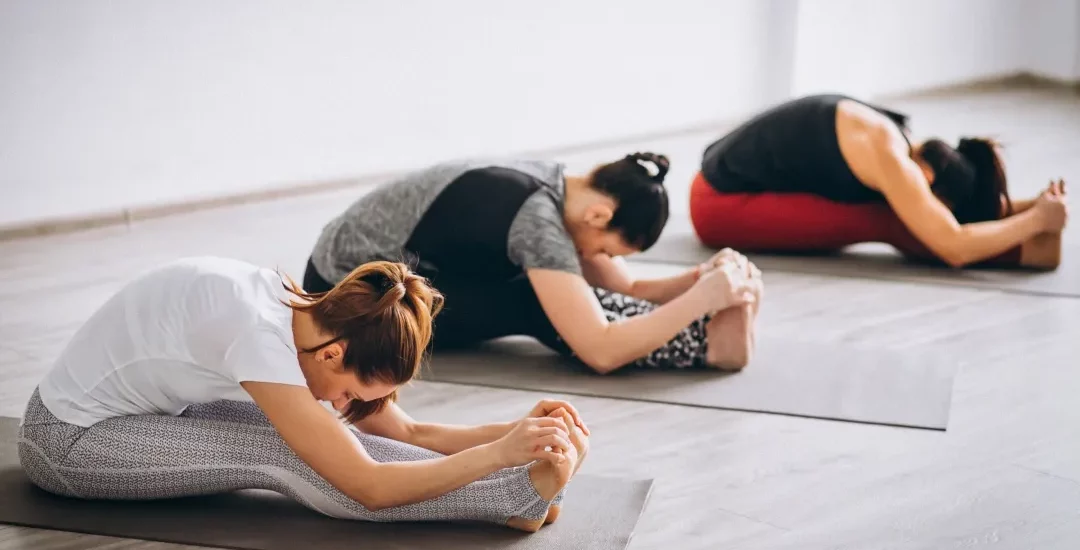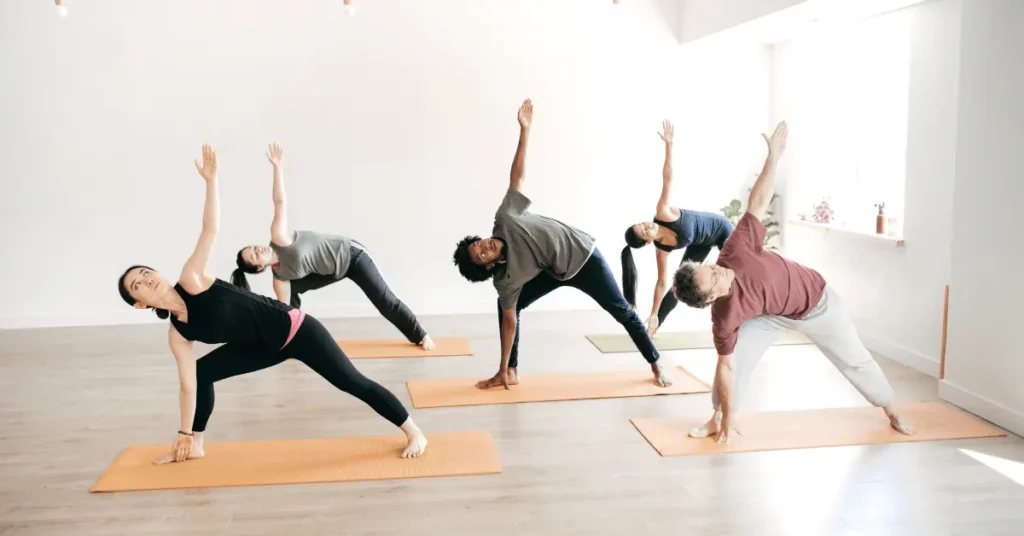

wordpress-seo domain was triggered too early. This is usually an indicator for some code in the plugin or theme running too early. Translations should be loaded at the init action or later. Please see Debugging in WordPress for more information. (This message was added in version 6.7.0.) in /home/sehatnagar.com/public_html/wp-includes/functions.php on line 6114
People practice hot yoga, also known as Bikram yoga, in a room that is heated to a high temperature, typically ranging from 95 to 105 degrees Fahrenheit. The intense heat and humidity can make the practice of hot yoga quite challenging, but also highly rewarding. As such, choosing the right attire for hot yoga is crucial to ensure maximum comfort, performance, and safety during the practice. In this article, we will discuss what to wear to hot yoga.

Hot yoga can make you sweat profusely, so it’s important to wear clothing made of moisture-wicking fabric that can effectively draw sweat away from your skin and help you stay dry. Materials such as polyester, nylon, or spandex are known for their moisture-wicking properties, so people look for them when practicing hot yoga.Avoid cotton as it tends to absorb moisture and can leave you feeling damp and uncomfortable during your practice.
Since hot yoga is practiced in a heated environment, it’s essential to wear lightweight and breathable clothing that allows air to circulate freely around your body. Loose-fitting tank tops, sports bras, shorts, or leggings made of breathable fabric are ideal choices for hot yoga. Avoid tight-fitting clothes that can trap heat and restrict your movements.
Hot yoga classes are typically done in a group setting, so you may want to consider the level of coverage and modesty in your attire. While shorts and tank tops are commonly worn in hot yoga, keep in mind that the high temperature and humidity can make you sweat a lot, which may result in your clothing clinging to your body. If you prefer more coverage, you can opt for longer shorts or capris, and a loose-fitting top that provides more modesty.
The right fit of your hot yoga attire can significantly impact your practice. Avoid clothing that is too tight, as it can restrict your movements and make it uncomfortable to stretch and bend during yoga poses. On the other hand, clothing that is too loose may slide or bunch up during your practice, which can be distracting. Look for clothing that fits you well and allows you to move freely without any restrictions.
In hot yoga classes, people typically practice in a group setting, and they may want to consider the level of coverage and modesty in their attire. While people commonly wear shorts and tank tops in hot yoga, it’s important to keep in mind that the high temperature and humidity can cause a lot of sweating, resulting in clothing clinging to the body. If you prefer more coverage, you can opt for longer shorts or capris, and a loose-fitting top that provides more modesty.
While accessories can add style to your yoga outfit, it’s best to keep them to a minimum during hot yoga. Avoid wearing excessive jewelry, long necklaces, or dangling earrings that can get in the way or cause discomfort during your practice. Instead, opt for simple and minimal accessories that won’t interfere with your movements.
Hot yoga can be intense and sweaty, so it’s important to maintain good hygiene during and after your practice. Choose clothing that is easy to clean and dries quickly to prevent odor and bacteria buildup. Avoid re-wearing sweaty clothes without washing them first to maintain cleanliness and freshness.
Some hot yoga studios may have specific dress code requirements for their classes. Before attending a hot yoga class, it’s a good idea to check with the studio or instructor about any specific guidelines they may have regarding attire. Some studios may require specific colors, lengths, or styles of clothing, so it’s best to be aware of any dress code restrictions beforehand.
Hot yoga studios can vary in terms of temperature and humidity levels, so it’s helpful to have layering options. You can start with lightweight clothing, such as a sports bra or tank top, and bring a lightweight, breathable cover-up like a long-sleeved shirt or a light sweater that you can put on or take off as needed during the class.
Hot yoga encompasses various styles of yoga, such as Bikram, Vinyasa, or Power Yoga, and each style may have different clothing requirements .Practitioners of Bikram yoga typically practice in a room heated to 105 degrees Fahrenheit with a humidity level of 40%, and they often wear minimal clothing to stay cool. On the other hand, Vinyasa or Power Yoga may involve more vigorous movements, and you may prefer tighter-fitting clothing that stays in place during dynamic poses.
Comfort is key when it comes to hot yoga attire. Everyone’s preferences and comfort levels are different, so it’s important to choose clothing that makes you feel comfortable and confident during your practice. If you prefer to wear looser clothing for better breathability and freedom of movement, go for it. If you prefer a more fitted style, choose that. Listen to your body and choose clothing that allows you to move and stretch comfortably without distractions.
If sustainability is important to you, you may want to look for yoga clothing made from eco-friendly and sustainable materials, such as organic cotton, bamboo, or recycled polyester. Many yoga clothing brands now offer sustainable options that are better for the environment and may align with your personal values.
In hot yoga, you may be barefoot or wearing grip socks, so it’s essential to pay attention to your feet as well. Make sure your feet are clean and well-groomed, and consider wearing grip socks or yoga socks with non-slip soles to prevent slipping during poses and maintain good foot hygiene.
Hot yoga classes can leave you feeling sweaty and damp, so it’s a good idea to bring a change of clothes for after class. Opt for loose-fitting, breathable clothing that can help you feel refreshed and comfortable after your practice. Additionally, bringing a towel to wipe off sweat and a water bottle to stay hydrated during and after class can also enhance your overall comfort.
when choosing what to wear to hot yoga, consider the studio’s dress code, the type of yoga practiced, layering options, personal comfort, sustainability, and foot care. Ultimately, the key is to wear clothing that allows you to move freely, is breathable, moisture-wicking, and makes you feel comfortable and confident during your hot yoga practice. By choosing appropriate attire, you can enhance your overall experience and reap the benefits of this invigorating and challenging form of yoga.